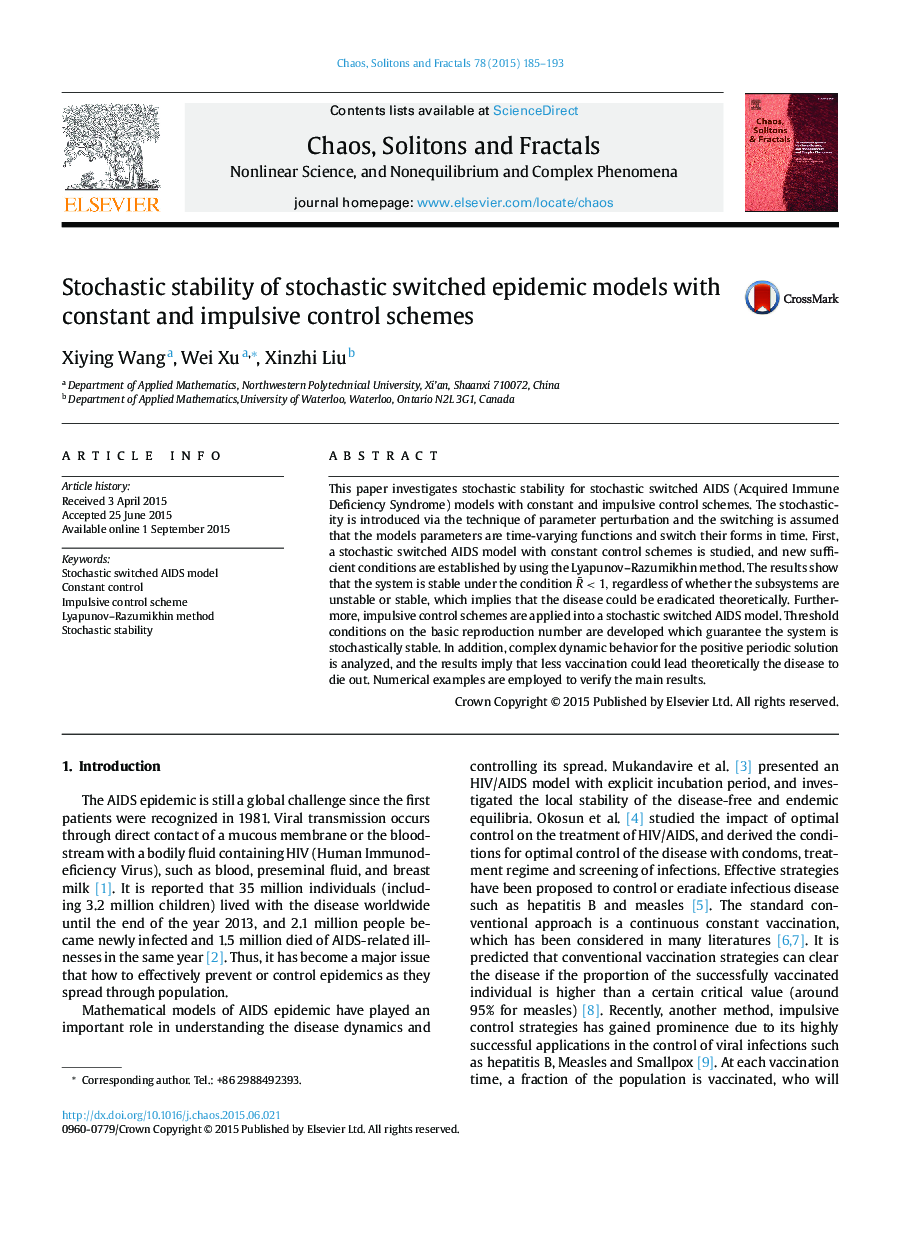| Article ID | Journal | Published Year | Pages | File Type |
|---|---|---|---|---|
| 1888536 | Chaos, Solitons & Fractals | 2015 | 9 Pages |
•Stochastic switched AIDS models with constant and pulse control schemes are investigated by using Lyapunov–Razumikhin method.•The model’s parameters are time-varying functions and switch functional forms by switching rule, due to population behavior or environmental factors changes. This is a relatively new research area.•Threshold conditions are established to assure that the disease could be eradicated theoretically.•Complex dynamic behavior for the positive periodic solution is presented.•The effects of stochasticity, switching parameters, and control schemes on the epidemic models are also studied in detail.
This paper investigates stochastic stability for stochastic switched AIDS (Acquired Immune Deficiency Syndrome) models with constant and impulsive control schemes. The stochasticity is introduced via the technique of parameter perturbation and the switching is assumed that the models parameters are time-varying functions and switch their forms in time. First, a stochastic switched AIDS model with constant control schemes is studied, and new sufficient conditions are established by using the Lyapunov–Razumikhin method. The results show that the system is stable under the condition R¯<1, regardless of whether the subsystems are unstable or stable, which implies that the disease could be eradicated theoretically. Furthermore, impulsive control schemes are applied into a stochastic switched AIDS model. Threshold conditions on the basic reproduction number are developed which guarantee the system is stochastically stable. In addition, complex dynamic behavior for the positive periodic solution is analyzed, and the results imply that less vaccination could lead theoretically the disease to die out. Numerical examples are employed to verify the main results.
